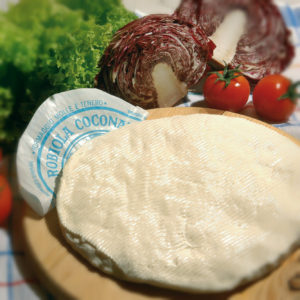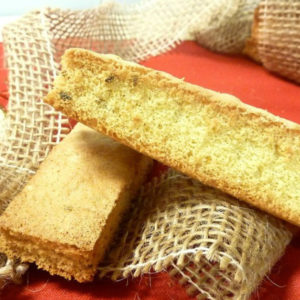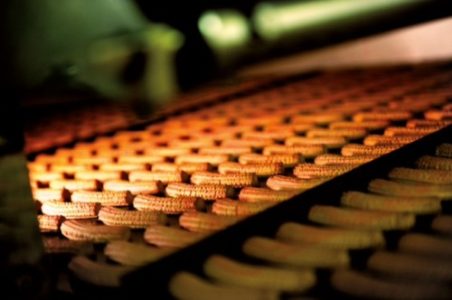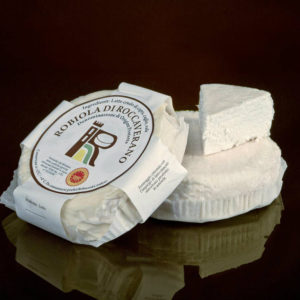
Posted on
Indulge in the Monferrato: robiola cheese, finocchini and krumiri cookies
Our journey through the food specialties of Monferrato continues with robiola cheese and two different kinds of cookies: finocchini and the popular krumiri.
After taking a look at the Gobbo Cardoon of Nizza Monferrato, chickpea farinata, and donkey agnolotti, our Monferrato specialties menu continues with cheeses and desserts, each of which comes from ancient tradition. These foods are made with simple recipes, the offspring of rural intuition and the capacity to use all manner of ingredients in imaginative and tasty ways.
FINOCCHINI
Finocchini are rectangular cookies that get their name from finocchio, or fennel seeds that are mixed into the dough (the other ingredients include eggs, flour, baking powder, sugar, honey, and a drop of anise seed oil). They look similar to the popular Italian breakfast food of dainty slices of crispbread called fette biscotate, and are about 10 cm long with an appetizing golden hue. Also called “Fenoglietti” or “Maggiorini,” after the baker who invented them, it seems their invention was an accident when a master pastry chef of Refrancore was preparing shortbread using a sponge cake recipe and accidentally tipped anise seed into the mix. This type of cookie, officially recognized by the presidential decree on June 7, 2012 as a Traditional Food Product, is the specialty of the bakery Pasticceria Fratelli Grossetti located in Refrancore.
Suggested pairing with finocchini – Finocchini & Passito di Ruchè LACCENTO
KRUMIRI
Krumiri, also spelled crumiri, are traditional cookies of Casale Monferrato that are unique because they’re prepared like shortbread. They’re made with white flour, fresh eggs, butter, sugar, and vanilla. They were first made in 1878 by the pastry chef Domenico Rossi. According to legend, he invited several friends to his bakery and, to impress them, improvised this recipe that is still used today. The name comes from the word crumiro, or an adjective that disparagingly describes a worker who doesn’t adhere to a trade union strike and consequently diminishing the effectiveness of it while strengthening the employer’s position. These cookies—thought to be a special favorite of King Umberto I of Savoy—received the recognition as a Traditional Food Product and have been protected with a patent since 1972.
Suggested pairing with krumiri – Krumiri & Moscato d’Asti Docg SAN CARLO
ROBIOLE
La Robiola di Cocconato
The Robiola of Cocconato is a PAT cheese (Prodotto Agroalimentare Tradizionale, or Traditional Food Product). It is soft and white, without a rind, although the outside is a bit firmer than the creamy inner part. In the past, when the housewives of Cocconato prepared it originally, it was made with raw cow’s milk; today, it is also made with pasteurized milk with a natural acidity, lactic acid, salt, and rennet. It’s fresh and sweet with a slightly acidic note to it, easy to eat plain or to use as an ingredient in many different recipes.
Suggested pairing with Robiola di Cocconato: CALYPSO
La Robiola di Roccaverano
The Robiola of Roccaverano, on the other hand, is uncooked and must contain a minimum of 50% goat’s milk, which may be mixed with a varying amount of cow’s or sheep’s milk. This cheese, Italy’s only goat DOP cheese, has an ancient history. Already made in Celtic times, Pliny mentioned it as well, and in 1899 the priest Pistone wrote of it in his chronicles, tracing its origins back to the Celtic period. When eaten fresh, the robiola of Roccaverano offers a fully pleasurable taste profile: on the nose it has notes of yogurt, green grass, and hazelnut; and in the mouth it has an extraordinary sapidity.



